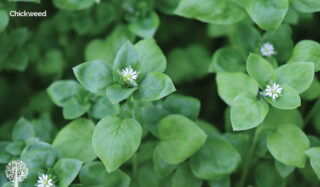Foraging for wild foods is a great way to supplement an ever-increasing food budget. It can be as easy as picking and adding dandelions to a salad. Nature’s bounty is endless as long as you gather sustainably and safely. Often considered weeds, these popular and easy-to-spot wild foods are as close as your backyard.
Dandelions
Grown for centuries as an edible, the dandelions’ status changed from food to weed when the culture of lawn grooming became a symbol of status.
With bright yellow flower heads and lance-shaped leaves, dandelions contain vitamins A and C, iron, and fiber.
The young flower head is sweet and can be used to make wine and tea. The dandelion’s bitter-tasting leaves are great in salads, as a garnish, or mixed with pancake batter, cookie dough, or cakes. When dried and roasted, the roots make a great coffee replacement.
Dandelions are prevalent and easy edibles to find and identify. Gather them from a place with a clean water source that hasn’t been exposed to pesticides or fertilizers. Letting dandelions grow on your chemical-free lawn is a great way to ensure your pick is safe.

Wood Sorrel
Wood sorrel grows in full sun to part shade. It has three leaves formed into a heart shape and five-petalled yellow, white, or occasionally violet-colored flowers.
Wood sorrel is a plant native to North America, and Indigenous peoples have used it for millennia as a medicinal and edible plant. Its high levels of oxalic acid turn into oxalates when combined with other minerals in our bodies. Oxalic acid is also present in spinach and other leafy greens; however, be warned that too much oxalate in the body can lead to kidney stones.
Wood sorrel’s citrus flavor makes a great addition to salads, soups, or stews and is perfect for comfort foods on chilly fall or winter days.
Miner’s Lettuce
Easily spotted by its round leaves, miner’s lettuce is a self-seeding annual with small pink or white flowers. In spring, these rise above the disc-shaped leaves. Find it in shady locations; it can be grown as an ornamental ground cover and, in the wild, can be found on hillsides.
Given its name during the 19th century, this edible plant was often consumed by miners during the gold rush era instead of other vegetables that were hard to come by.
The entire plant is edible, but the best parts are the leaves, which can be added to salads and sandwiches and substituted for leafy greens in any dish. Plants growing in the shade are tastier, while those growing in sunny, dry conditions have a reddish tint and bitter taste.

Chickweed
Chickweed is easy to spot, especially for the first-time forager. A member of the carnation family, its lack of milky stem sap distinguishes it from other plants.
This plant grows close to the ground; its leaves are teardrop-shaped and covered with fine hairs. Prevalent late winter into summer, the plant enjoys cool, damp conditions and is often considered one the most annoying of lawn weeds.
The flavor of chickweed compares to corn silk, which is pleasant and mild. Great eaten raw, it can be a substitute for cultivated microgreens or sprouts in sandwiches and wraps.

Disclaimer: Always be sure that the food you gather is edible. Take a course, use a foraging app, and if in doubt, don’t gather what you don’t know.